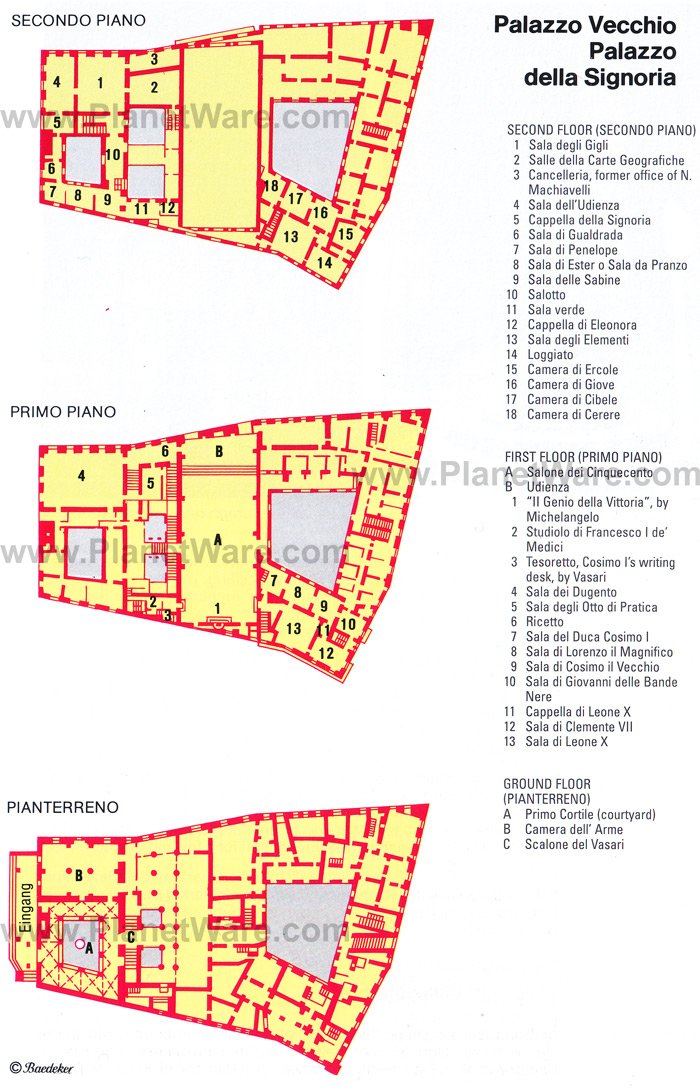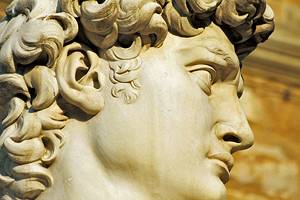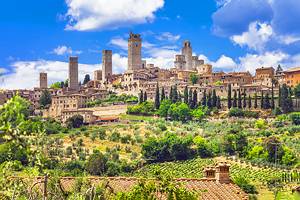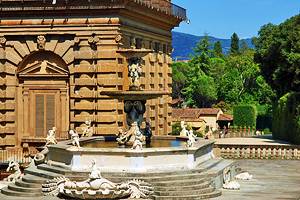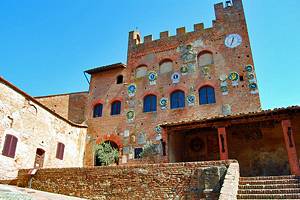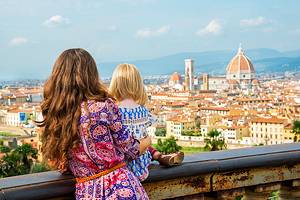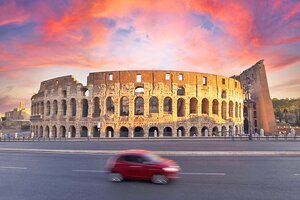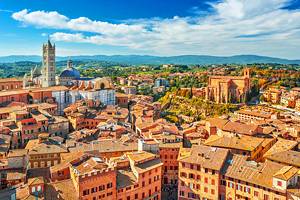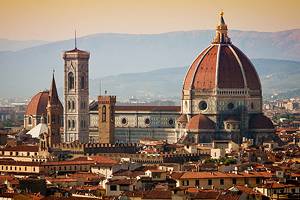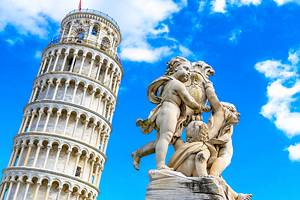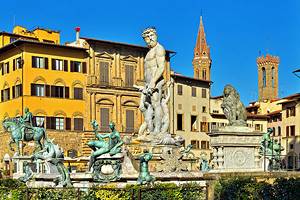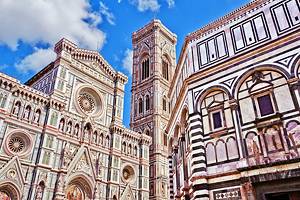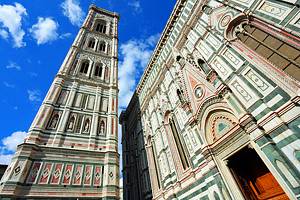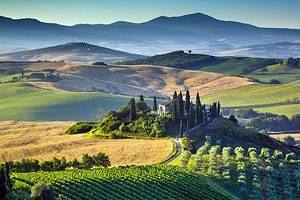Exploring Palazzo Vecchio in Florence: A Visitor's Guide
The principal palace in Florence seems like a living timeline, encapsulating the city's rich history. As you explore its courtyard, climb Vasari's grand staircase to the impressive Salone dei Cinquecento, and continue up into the Medici apartments, you'll meet the leading lights of Florence's rise to power and those who led it through its artistic and cultural heyday as the leader in Europe's Renaissance.
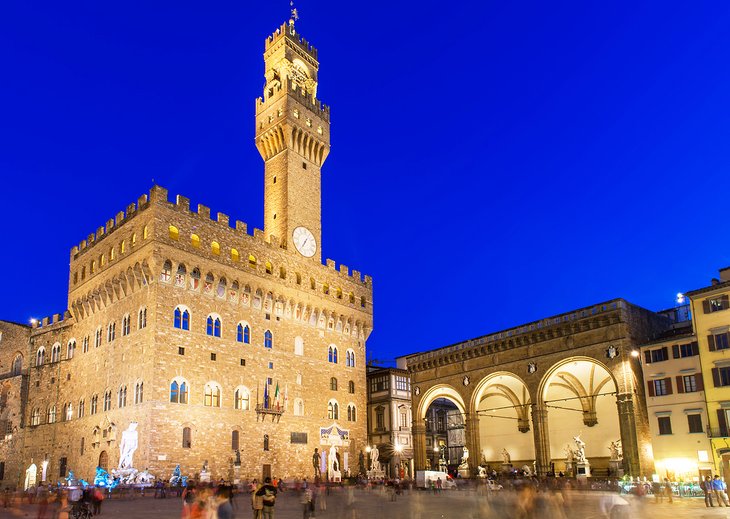
If you explore the excavations below ground, you'll discover the city's Roman past. This continuum of the city's history makes Palazzo Vecchio (Palazzo della Signoria) one of the most fascinating things to see in Florence.
The almost fortress-like building echoes with the power exercised by the Florentine state and the Medici family from the 14th to the 16th century. It was begun just as the 13th century was ending, in 1299, as the official residence of the Priors (Palazzo dei Priori) and the Gonfaloniere, the governing body of the Republic (the Signoria).
The Medici dynasty, which ruled Florence and Tuscany, still lived and had offices in their own palace until 1540, when Cosimo I moved here, and it became the Palazzo Ducale (Ducal Palace). When he moved into the Pitti Palace, the Ducal Palace became known as the Palazzo Vecchio (old palace).
Between 1865 and 1872, during the Italian struggle for unity, it was, for a time, the seat of the government, the Chamber of Deputies, and the Foreign Ministry. After unification, it became the city offices, and the state rooms were opened to the public.
Make the most of your time here by using this helpful guide to exploring the Palazzo Vecchio.
- Exterior
- Cortile di Michelozzo and Ground Floor
- Salone dei Cinquecento
- Sala dei Gigli and Medici Apartments
- Sala delle Carte Geografiche (Geographical Map Room)
- The Arnolfo Tower
- Roman Theater Excavations
- Traces of Florence Exhibition
- Take a Tour
- Learn a Florentine Art
- Tips & Tactics: How to Make the Most of Your Visit to Palazzo Vecchio
- Address
Exterior
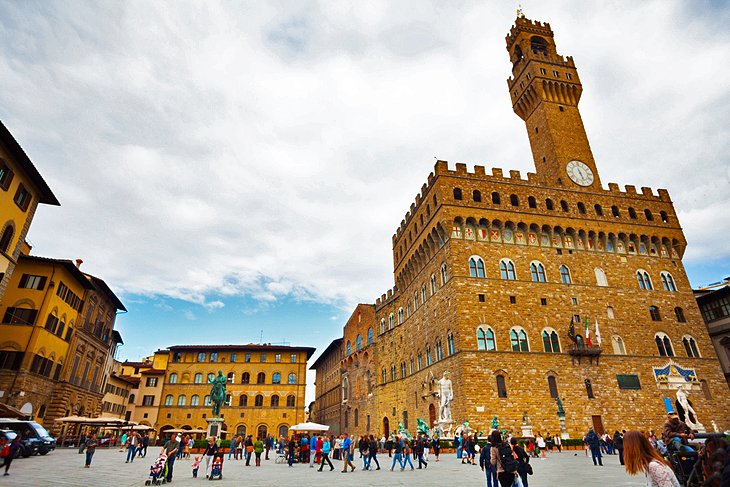
Looking at the cubic shape and battlements of Palazzo Vecchio, it is easy to picture it as the fortress these palaces once were. In fact, this one was built around one of the defensive towers that noble families erected during the Middle Ages as places of refuge from the frequent attacks of rival cities and various marauders.
You'll notice how the current tower is offset from the building's center; that is to allow for the older tower that forms its base. Along with a copy of one of Florence's best known icons, Michelangelo's David, replicas of two works by Donatello stand at the main entrance: Marzocco, the heraldic lion of Florence holding the city's coat of arms, and a bronze statue, Judith and Holofernes (the original is in the Sala del Gigli, inside).
Cortile di Michelozzo and Ground Floor
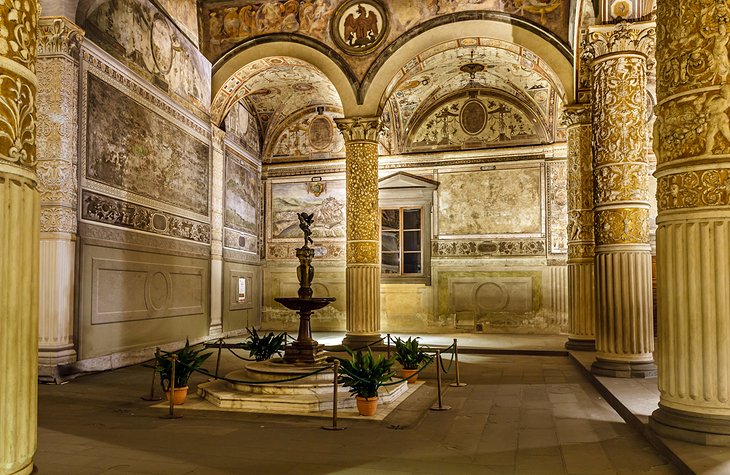
Begin your visit in the first courtyard, redesigned in 1470 by Michelozzo with an arcade of intricately carved columns. In the center is a Verrocchio fountain with a putto and dolphin (1476); you'll see a copy of the original in a more protected spot upstairs.
The original palace has been restored several times, and the only room of the 14th-century palace to survive is the Camera dell'Arme, or armory. The grand staircase you'll climb to reach the main floor above was added by Vasari in 1560 to 1563.
Salone dei Cinquecento
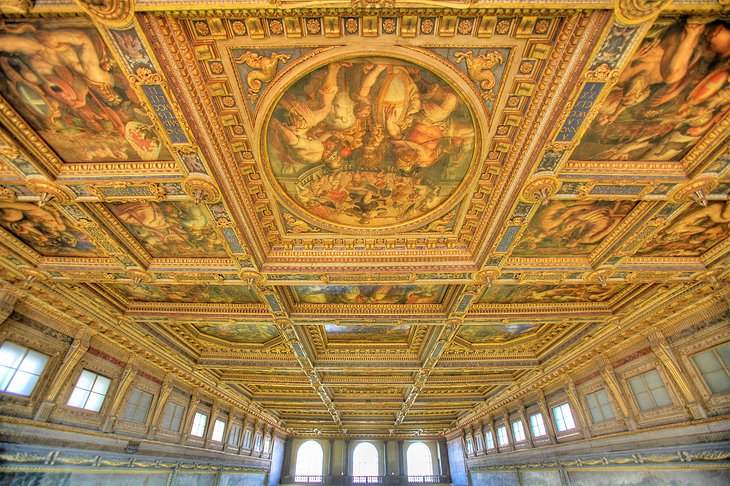
The main floor (in Italy called the first floor or the "piano nobile") centers around the soaring Salone dei Cinquecento, whose ornate coffered ceiling rises 21 meters overhead, each of its 38 panels decorated with allegories and scenes from the history of Florence and of the Medici family.
The walls are lined with monumental paintings of Medici and city history. The highlight is Michelangelo's Genius of Victory (1532-1534), which was intended for the tomb of Pope Julius II in Rome. It is one of the artist's finest works, showing his mastery both of representing movement of the body and of translating that into marble.
Leone X's quarters, opposite the entrance, are now office for the mayor and city council. Vasari designed a beautiful jewel box of a room for Francesco I's study, decorating it with paintings, frescoes, and statues by some of the late-Renaissance's most prominent painters and sculptors, including Giambologna, who did the small Apollo statue.
One of the palace's many secret staircases, by which the Medici moved from room to room in private, leads to the Tesoretto. This was Cosimo I's study, with ceiling paintings by students of Vasari. At the other side of the Salone dei Cinquecento are more small rooms, including the Sala del Dugento with a magnificently carved wooden ceiling by Michelozzo. While the Salone is the most impressive of the places to visit in the palazzo, these rooms are the loveliest.
Sala dei Gigli and Medici Apartments
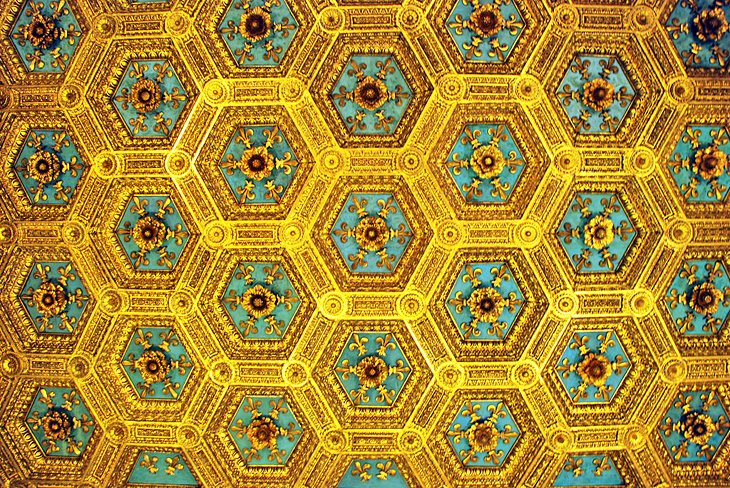
A top attraction on the upper floor (in Italy second floor) is the Sala dei Gigli, or Lily Room, with a large fresco by Ghirlandaio (1481-1485) and the original of the famous bronze group Judith and Holofernes by Donatello (1455-1460), brought here in 1888 from Piazza della Signoria to protect it from weathering. Another original, Verrocchio's Putto and Dolphin from the fountain in the courtyard below, is in the Cancelleria, former Chancellery of the Secretary of the Florentine Republic.
The Sala dell'Udienza (Audience Room) has a richly carved ceiling and frescoes, as do several other rooms on this floor, but among the most interesting of these are the private study of the Duchess Bianca Cappello and the Quartiere di Eleonora di Toledo, rooms of the consort of Cosimo I, Eleonora of Toledo.
The frescoes on the ceilings and elsewhere in her rooms are scenes from history and mythology; those decorating her chapel are by Bronzino. From the Quartiere degli Elementi, step out onto the terrace of Loggiato di Saturno to enjoy the view of Florence.
Sala delle Carte Geografiche (Geographical Map Room)
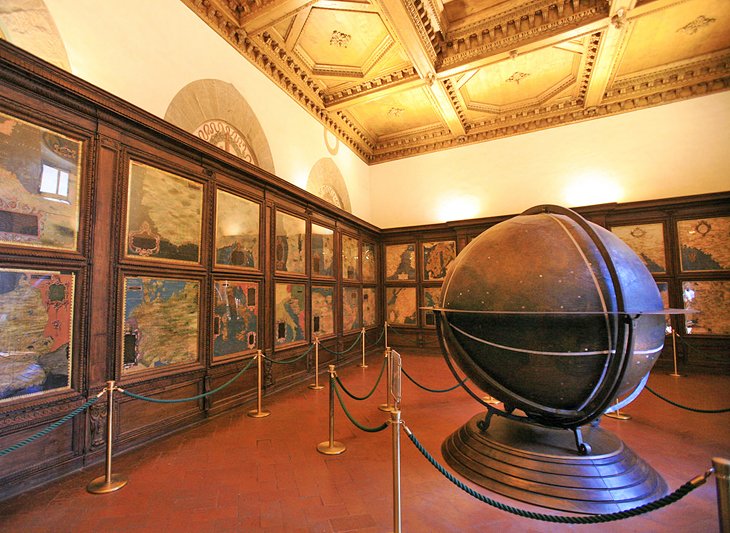
Originally the room where the Medici secured their most important documents and treasures, the Sala delle Carte Geografiche gives us a rare view of all the parts of the world known to enlightened Europeans in the 16th century.
The walls are covered with dozens of large maps painted on leather, and at the room's center is the mid-16th-century Mappa Mundi, a world globe nearly two meters in diameter that was the largest rotating world map of its day.
The Arnolfo Tower
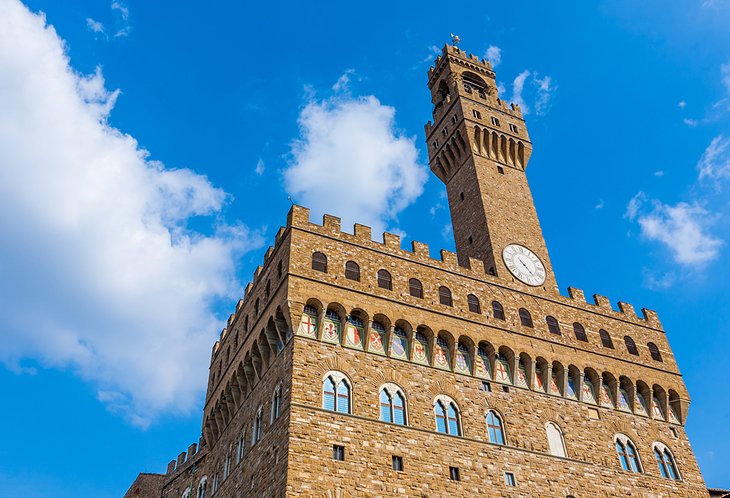
From the Ballatoio, on the floor with the private apartments, you can climb 233 steps to the crenellated gallery atop the tower for a panorama of the city. On the way up, you'll pass the Alberghettino, a prison cell known as the "little hotel," where Cosimo the Elder was held in 1433 before he was sent into exile and where Savonarola was imprisoned briefly in 1498.
The tower, with its square shape and widened parapet at top, is a well-recognized symbol of Florence and has been imitated in churches and other towers around the world ever since. It is the earliest part of the palace, begun in 1299 on the base of a medieval tower.
Roman Theater Excavations
The importance of the site goes back further than the Palazzo Vecchio itself. Under the Palazzo lie the remains of a Roman theater from the first century AD, as well as many other artifacts of the Roman colony of Florentia and even more ancient layers of the city.
You can visit these on small group tours by advance reservation. (You can do this ahead or at the ticket desk of the Palazzo Vecchio, but groups are small, so it's a good idea to reserve as early as possible.) Tours are in Italian, but there is a film to explain what you're seeing as you explore the underground site. Children must be eight or older.
Traces of Florence Exhibition
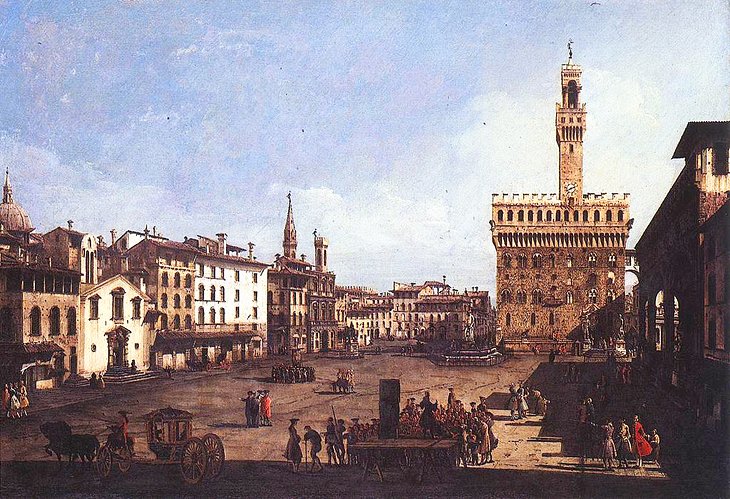
A new exhibition area adds another dimension to the museums at Palazzo Vecchio. "Traces of Florence" explores the development and beauty of the city visually, through pictures and maps. Two rooms on the palace's ground floor are dedicated to a permanent display and changing exhibits of engravings, paintings, drawings, and photographs that illustrate how the city looked and changed from the Renaissance through the 20th century.
These include overall views, such as a reproduction of the Carta della Catena and a bird's-eye view of the city by Stefano Bonsignori, but also scenes of city life and vignettes of neighborhoods. There are heartbreaking photographs of the effects of two tragic events in the city's 20th-century history: bombing during World War II and the devastating floods of 1966.
Take a Tour
Palazzo Vecchio is so big and has so many hidden places that taking a tour is a good way to be sure you see everything.
Tours are offered by the Palazzo Vecchio itself. These range from a 75-minute itinerary through the rooms and a tour highlighting the works of the Medici's architect, Giorgio Vasari, to one retracing the scenes from Dan Brown's novel, Inferno.
The most interesting - and a chance to get into places most tourists don't see - is the Secret Passages tour, including spaces such as the secret staircase of Duke Gualtieri and others not open to the public. Several are designed especially for families with children, including At Court with Donna Isabella, led by a lady-in-waiting who brings to life the days at the ducal court.
Learn a Florentine Art
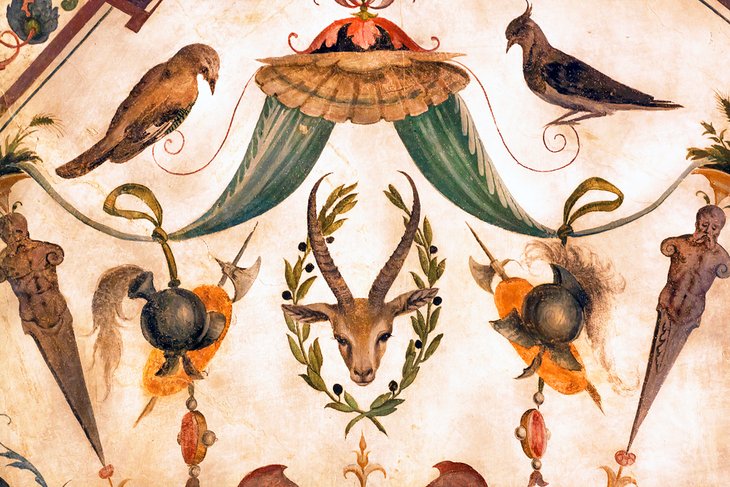
As you tour the ornate palace, you can't help be wowed by the frescoes and the glittering gold that embellishes the walls and ceilings. You and your family can learn these Renaissance arts in workshops in the Palazzo Vecchio.
The ancient art of fresco painting involves applying pigment to fresh plaster, so that the color becomes part of the surface. You can learn this technique and create a work of art to take home. In another workshop, you can learn the Renaissance art of gilding, grinding your own pigments and creating your own original work as a personalized souvenir of Florence.
These workshops, suitable for children over eight years old, are held at the Palazzo Vecchio museum and are free, but you must make a reservation.
Tips & Tactics: How to Make the Most of Your Visit to Palazzo Vecchio
- Expect to spend at least 90 minutes touring the palace and tower.
- The tower is closed in case of rain and not advised if you have a heart condition, breathing problems, acrophobia, or claustrophobia. Children under age six are not allowed in the tower, and those under 18 must be with an adult.
- Because tours vary and must be reserved, it's a good idea to stop here early in your stay and reserve spaces.
- In the summer, you can visit the battlements at night, between 8 and 11pm, for an extra fee. You must sign up where you buy your tickets to the palace.
Address
- Piazza Signoria, Florence
More Related Articles on PlanetWare.com
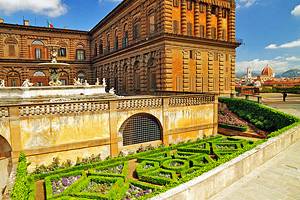
More Things to See and Do in Florence: You'll find more of the treasures and collections of the Medici family across the Arno at the even grander Pitti Palace and Boboli Gardens. Their earlier Palazzo Riccardi and other grand Florentine homes are detailed in our Visitors Guide to the top palaces in Florence.
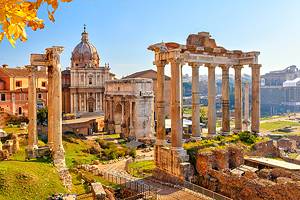
Exploring beyond Florence: Because Florence is in the center of Italy and on a main train line, it's easy to get from the city to many of the best places to visit in Italy. To the north is Bologna, Italy's food capital, and the tourist attractions of Rome are as little as 1.5 hours away by high-speed train.
